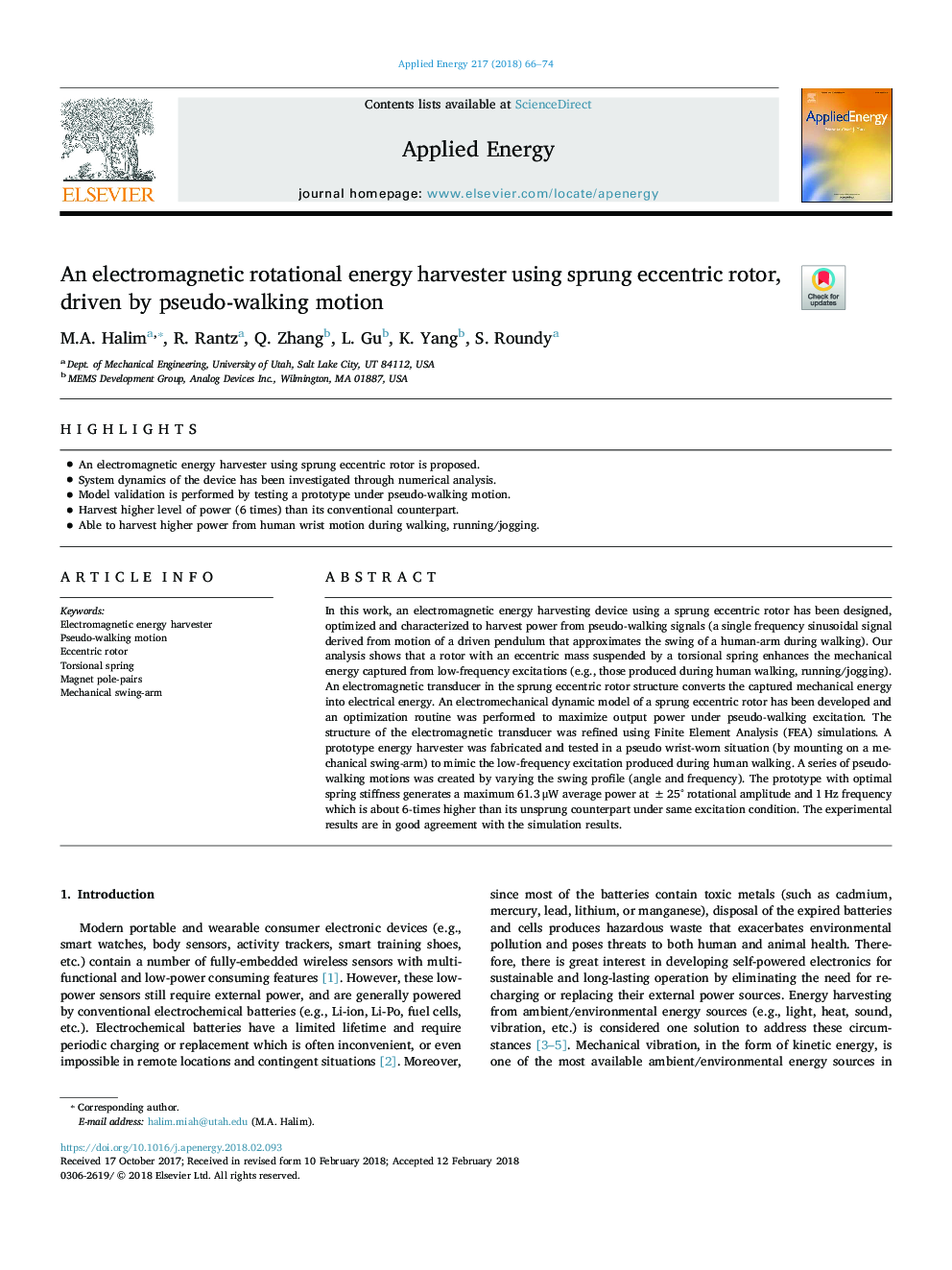| Article ID | Journal | Published Year | Pages | File Type |
|---|---|---|---|---|
| 6680422 | Applied Energy | 2018 | 9 Pages |
Abstract
In this work, an electromagnetic energy harvesting device using a sprung eccentric rotor has been designed, optimized and characterized to harvest power from pseudo-walking signals (a single frequency sinusoidal signal derived from motion of a driven pendulum that approximates the swing of a human-arm during walking). Our analysis shows that a rotor with an eccentric mass suspended by a torsional spring enhances the mechanical energy captured from low-frequency excitations (e.g., those produced during human walking, running/jogging). An electromagnetic transducer in the sprung eccentric rotor structure converts the captured mechanical energy into electrical energy. An electromechanical dynamic model of a sprung eccentric rotor has been developed and an optimization routine was performed to maximize output power under pseudo-walking excitation. The structure of the electromagnetic transducer was refined using Finite Element Analysis (FEA) simulations. A prototype energy harvester was fabricated and tested in a pseudo wrist-worn situation (by mounting on a mechanical swing-arm) to mimic the low-frequency excitation produced during human walking. A series of pseudo-walking motions was created by varying the swing profile (angle and frequency). The prototype with optimal spring stiffness generates a maximum 61.3â¯Î¼W average power atâ¯Â±25° rotational amplitude and 1â¯Hz frequency which is about 6-times higher than its unsprung counterpart under same excitation condition. The experimental results are in good agreement with the simulation results.
Keywords
Related Topics
Physical Sciences and Engineering
Energy
Energy Engineering and Power Technology
Authors
M.A. Halim, R. Rantz, Q. Zhang, L. Gu, K. Yang, S. Roundy,
